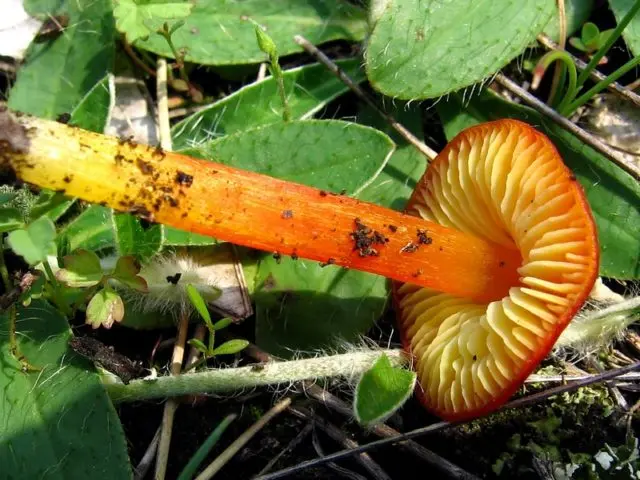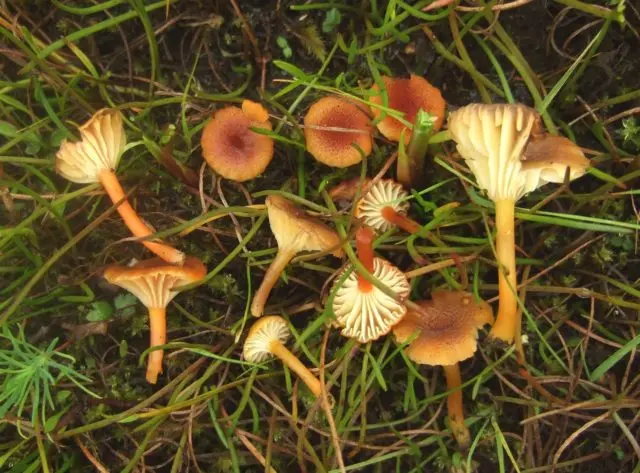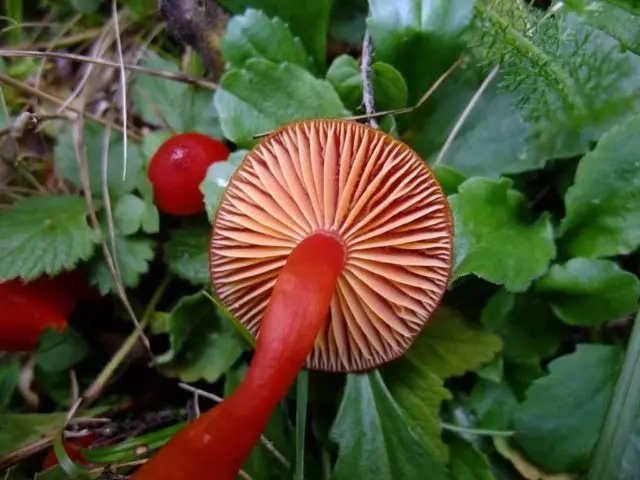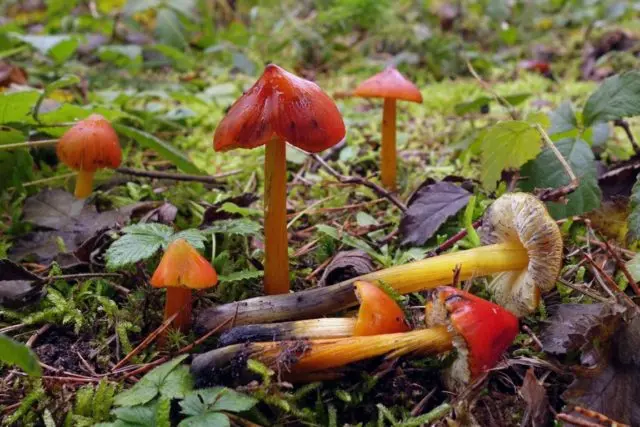Contents
Hygrocybe turunda is an inedible representative of the Hygroforov family. It grows in mixed forests, causes severe gastric poisoning when eaten, belongs to the inedible category. In order not to make a mistake during a quiet hunt, you need to know the external description of the fruiting body, view photo and video materials.
What does hygrocibe turunda look like
Acquaintance with turunda hygrocybe should begin with the external characteristics of the fruiting body. The convex hat straightens as it matures, leaving a small depression in the center. The surface is covered with a matte, scaly skin of bright orange color. The edges are fragile, bent inward. In wet weather, the surface of the cap is covered with mucus.

The species grows mainly in mixed forests.
The lower layer is formed by thick, sparsely planted plates that descend onto the stem. Reproduction occurs by white microscopic spores, located in a light red powder.
The curved leg is thin, long, cylindrical. The surface is colored to match the cap, but towards the base the peel is covered with a whitish thick coating. The pulp is dense, tender, tasteless and odorless.
Hugrocybe turunda, like any mushroom, has similar counterparts. These include:
- Alaya is an edible species. You can recognize it by its bright red or pale orange bell-shaped hat. The fungus is found in open areas from late summer until the first frost. Due to the lack of mushroom taste and aroma, the species has no nutritional value. Many mushroom pickers, after heat treatment, fry the harvested crop, stew, prepare preservation for the winter.

The mushroom is eaten only after heat treatment.
- Conical – a poisonous species, when eaten, causes mild gastric poisoning. The mushroom has a small convex cap, 6 cm in diameter. The surface is covered with a dark brown skin, which in rainy weather is covered with a mucous membrane. The pulp is thin and fragile, tasteless and odorless, blackens when mechanically damaged.

The species is distributed in deciduous forests, bears fruit in autumn.
Where does hygrocybe turunda grow
Hygrocybe turunda prefers to grow in mixed forests, in open glades, in dense grass and in moss. It can also be seen in damp wetlands or along the shoreline of water bodies.
The species is widely distributed throughout Our Country. It bears fruit throughout the warm period until the first frost.
Is it possible to eat hygrocibe turunda
The fungus belongs to the inedible group. Causes food poisoning when eaten.

Hygrocybe turunda is not used in cooking
The first signs of intoxication:
- nausea, vomiting;
- pain in epigastrium;
- diarrhea;
- headache;
- cold, clammy sweat.
Signs of poisoning appear 2 hours after eating. When the first symptoms appear, it is necessary to wash the stomach, take an absorbent, apply heat to the limbs and on the stomach. If after the manipulations there is no relief, you need to urgently call a team of doctors.
Conclusion
Hygrocybe turunda is an inedible representative of the mushroom kingdom. The species grows in mixed forests, bears fruit throughout the warm season. In order not to confuse it with edible mushrooms, it is important to know the external description, place and time of fruiting.











